Religion Romanian Orthodox | Name Princess of | |
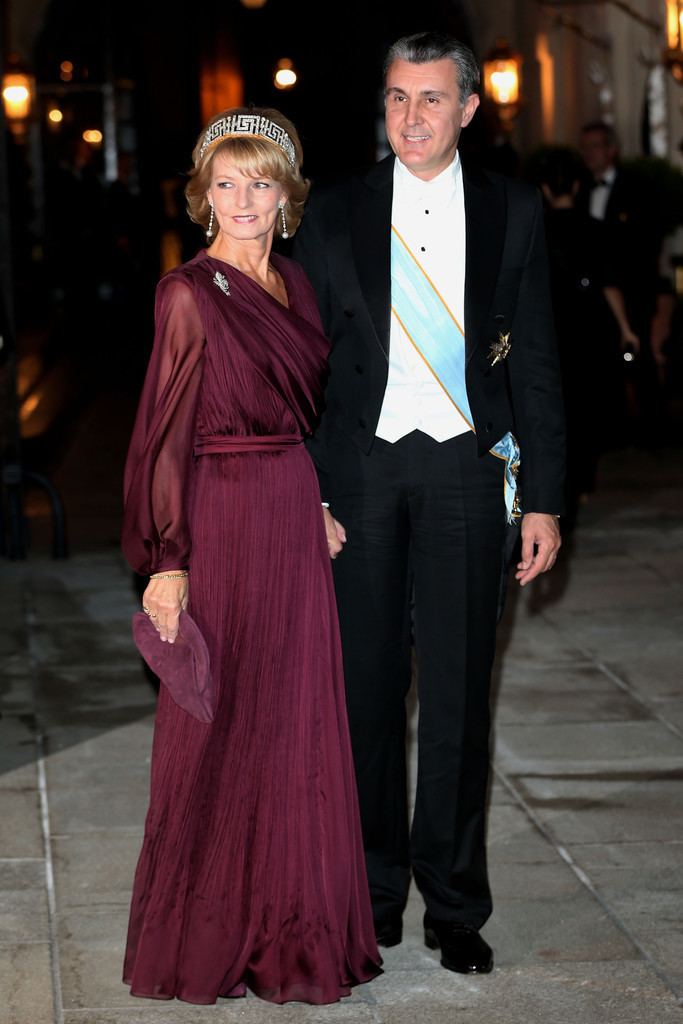 | ||
Born 26 March 1949 (age 76)
Lausanne, Switzerland ( 1949-03-26 ) Father King Michael I of Romania Mother Princess Anne of Bourbon-Parma Spouse Prince Radu of Romania (m. 1996) House Hohenzollern-Sigmaringen of Romania Parents Queen Anne of Romania, Michael I of Romania Grandparents Helen of Greece and Denmark Great-grandparents Marie of Romania, Ferdinand I of Romania Similar People Prince Radu of Romania, Michael I of Romania, Nicholas Medforth‑Mills, Queen Anne of Romania, Princess Maria of Romania | ||
Crown Princess Margareta of Romania, Princess of Hohenzollern (born 26 March 1949 in Lausanne, Switzerland) is the eldest daughter of King Michael I of Romania and his wife Queen Anne. Princess Margareta's father named her the heir presumptive to Romania's abolished throne in 1997.
Contents
- Birth
- Childhood
- Early education
- Secondary education
- Further education
- Careers
- Romanian revolution
- Arrival in Romania
- Romanian Red Cross
- Succession
- Succession Issues
- Foreign relations
- Private life
- Controversies
- Political support
- Dynastic honours
- Foreign honours
- National awards
- Foreign awards
- Publications
- References
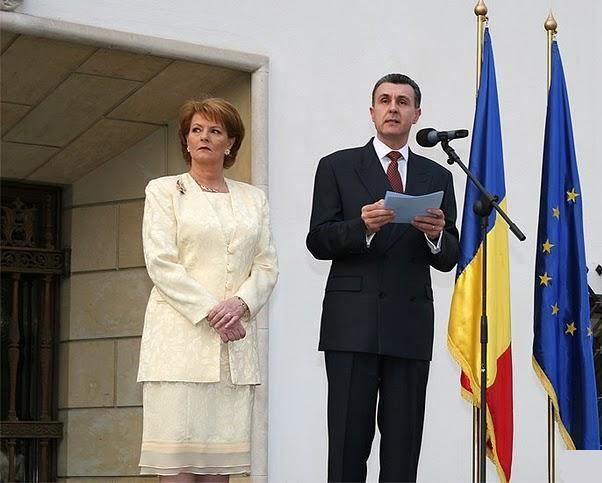
Margareta has four sisters and no brothers or children. Her heir is her next sister, Princess Elena of Romania. According to the defunct last democratic royal Constitution of 1923 which barred women from wearing the crown, Margareta and her sisters could not succeed to the throne of Romania (see also "Line of succession to the former Romanian throne").

On 30 December 2007, King Michael designated Princess Margareta as heir presumptive to the throne by an act which is not recognized by the Romanian Republic and lacks legal validity without approval by Romania's Parliament. On the same occasion, Michael also requested that, should the Romanian Parliament consider restoring the monarchy, the Salic law of succession not be reinstated, allowing female succession. According to the new statute of the Romanian Royal House as declared by Michael, no illegitimate descendants or collateral lines may claim dynastic privileges, titles or rank and any such are excluded from the Royal House of Romania and from the line of succession to the throne.
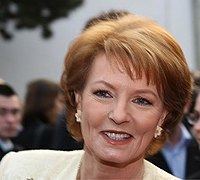
Birth
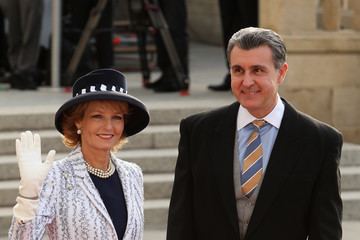
Margareta was born in exile 26 March 1949 in Lausanne, Switzerland as the first of King Michael I and Queen Anne's five daughters. She was baptised in the Romanian Orthodox Church; her godfather is Prince Phillip, Duke of Edinburgh. She was followed by four sisters: Princess Elena (born 1950), Princess Irina (born 1953), Princess Sophie (born 1957) and Princess Maria (born 1964).
Childhood
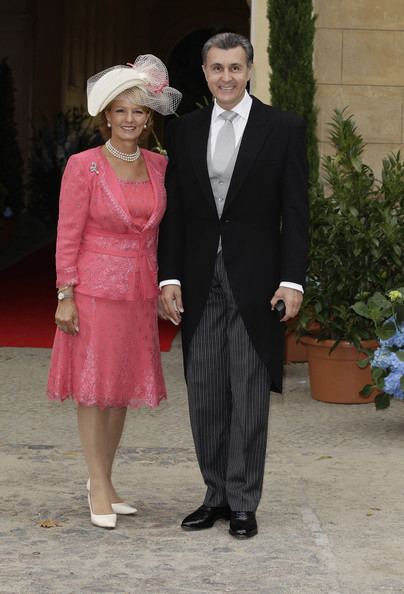
Margareta spent her childhood at family homes in Lausanne and at Ayot House, St Lawrence in Hertfordshire, England. During holidays she and her sisters spent time with their grandparents; paternally with Helen, Queen Mother at Villa Sparta in Italy and maternally, with Princess Margaret and her husband Prince René of Bourbon-Parma in Copenhagen. She and her sisters were told "fascinating tales of a homeland they couldn't visit" by their father. She also spent time with relatives in Greece, Italy, Denmark, Luxembourg and Spain.

Queen Helen's interest in horses influenced Margareta, who developed an equestrian.
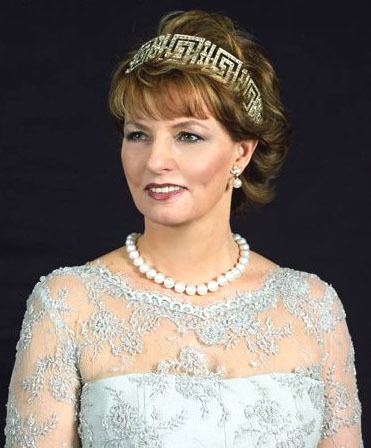
In 1964, along with five other princesses, Margareta was a bridesmaid at the wedding of Princess Anne-Marie of Denmark to King Constantine II of Greece
Early education
In 1956 Margareta lived with Queen Helen for six months at her villa in Florence, attending kindergarten until returning to Switzerland, where she attended a primary school, with Princess Sophie, from age six to nine.
Secondary education
In 1960 she was sent to a boarding school in Old Basing, Hampshire, where she stayed until she was 13; she found it difficult to be away from home but was glad that she became more mature, noting that her English improved later.
Her favourite subjects were: art, riding and natural sciences (she learned how to grow plants) and also piano lessons.
In 1964 she began secondary education at a French school in Switzerland, where she studied philosophy.
"I did my baccalaureate in Switzerland, got my driving licence the next day and I left very fast. I really didn't enjoy the baccalaureate, I didn't enjoy school, I didn't enjoy Switzerland" Margareta said in an interview in 2007.
After her Swiss-French baccalaureate, rather than heading straight for Paris and studying at the Ecole des Beaux-Arts, her preferred destination, she was persuaded to return to Florence to spend a year with her Romanian grandmother, whom she described as "my spiritual guide, my mentor, guiding star. She taught me a lot about life, opened my eyes to all that is beautiful and good in the world". Her dreams of art school were soon replaced by a determination to go to university.
Further education
Queen Helen's aesthetic tastes extended Margareta's cultural horizons and excited her to meet interesting people who were part of her grandmother's circle of acquaintances, in which she met Romanian and Greek diplomats, artists, intellectuals, scientists and craftsmen, as well as subjects. Helen grandmother took the opportunity to encourage the Margareta to attend a university and pursue a career at the United Nations.
As relatives and friends of her parents lived in London, Margareta was hesitant to attend a university there, not wanting to be tied down by formalities associated with being a princess, and chose instead to attend the University of Edinburgh in Scotland. Known there as "Margareta de Roumanie", for the first few weeks she felt a depressing "sense of foreignness". She studied sociology, political science and public international law. Engaging herself in activities on the campus, she became a member of the students' representative council. In 1974 she completed her studies and obtained her degrees.
While at the University during her twenties, Margareta was involved in a five-year romantic relationship with Gordon Brown, who would serve as Prime Minister of the United Kingdom from 2007 to 2010; In 2007 she was interviewed by an editor of The Daily Telegraph: "It was a very solid and romantic story, I never stopped loving him but one day it didn't seem right any more, it was politics, politics, politics, and I needed nurturing," she said.
Careers
After her graduation in 1974, she worked in a number of British universities for a few years, specialising in medical sociology and Public health policy. Later she participated in an international research program coordinated by the World Health Organisation that focused on developing health policy recommendations and preventive pilot projects.
In 1979 she then worked for the agencies of the United Nations: The World Health Organization and The United Nations Population Fund, where she joined Social projects in public health, based in Africa and Latin America where she came into contact with suffering and deficiencies of the disadvantaged which was the kick start of her experience of the beginning of a road in humanitarian service, which she has still followed since then.
In 1983 she moved to Rome and joined the Food and Agriculture Organisation of the United Nations where, as a member of the World Food Day project team, she worked for three years on the public awareness campaign concerning agricultural programs, nutrition, and poverty alleviation. She belonged to the International Fund for Agricultural Development team until 1986.
In 1986 she joined the International Fund for Agricultural Development where she handled relations with nongovernmental organizations and assisted in raising funds for IFAD programs.
Problems started to arise in Romania and in the summer of 1989 Margareta resigned from her job. Concluding that something fundamental was needed in Eastern Europe, she moved to Geneva to work with the Romanian Crown Council and the Royal family, whose members began preparing themselves for what was to come.
Romanian revolution
In mid 1989 civil and governmental unrest started arising in the Eastern Bloc as the loosening of control of Eastern Europe by the Soviet Union had triggered most of the impact for the former states which started a Revolutionary wave leading to the Revolutions of 1989.
In early December 1989 there was civil unrest by the anti-government protesters and on 16 December the 12-day Romanian Revolution started; On the commands of Dictator President Nicolae Ceaușescu a mass genocide was led by members of the military who unanimously switched on the 22nd from supporting him to backing the protesting population. On the 25th of December the Dictator President Nicolae Ceaușescu and his wife Deputy Prime Minister Elena Ceaușescu were deposed, captured and executed by orders from a Drumhead military tribunal; 42 years of the Socialist Republic of Romania had ended. The revolution was the first overthrow of the ruling governmental system since King Michael's Coup which he successfully staged in 1944 by arresting members of the Military Government which supported Nazi Germany.
During the Revolution, all members of the Royal Family took a part to console the situation outside of Romania.
Arrival in Romania
While she was visiting one orphanage, a child in a filthy cot died in front of her. It spurred her to establish the Princess Margareta of Romania Foundation in 1990.
Operating in Romania, the United Kingdom, Switzerland, France, Belgium and the United States, the Princess Margareta of Romania Foundation develops programs that:
The foundation has raised more than five million euros, through which it contributes to the development of Romanian civil society.
Taking up permanent residence in Romania, along with her parents, Princess Margareta continues to engage in public activities there, sometimes along with officials of the Romanian Republic including, for example, in January 2015 the celebration of the 25th year since her return to Romania held at the Romanian Athenaeum, followed by a dinner at the CEC Palace with Romania's Prime Minister Victor Ponta and Senate President Călin Popescu-Tăriceanu; and of 200 guests — foreign personalities, but also Romanian ones activating in all fields of interest, who have supported the Royal Family for the past 25 years. Out of these personalities of Romania, the United States of America, France, and Switzerland, a certain number was decorated by Princess Margareta, on the occasion of the aforementioned series of events. Among the foreign personalities decorated was Frédéric Mitterrand, the nephew of the former president of France as well as hosting a March 2015 gala at the dynasty's historical family seat, Peleș Castle, in honour of the Romanian Rugby Union, attended by Klaus Johannis, the first incumbent Romanian president to pay an official visit to the former royal family.
Romanian Red Cross
On 15 May 2015, the General Assembly of the Romanian Red Cross elected Margareta as President of the Romanian Red Cross. The Red Cross was instituted as a Romanian branch of the International Red Cross in 1876, under the reign of her great-great grand uncle King Carol I of Romania, it benefited from important support from his wife Queen Elisabeth; From 1915, the Romanian Red Cross received the leadership of Margareta's Paternal great grandmother Queen Marie, who was seen as a symbol, an ambassador and an inspirational leader of the organisation; Margareta's paternal grandmother: Queen Helen, Queen Mother also provided great patronage to the organisation during the Second World War. This is a role in which Margareta will be further leading by following and fulfilling the legacy of her ancestors. In her statement, she expressed her gratitude to the Romanian Red Cross representatives, who re-established a long and valuable tradition of partnership between the oldest organization in the country and the Romanian Crown.
In September 2015 she and her Red Cross entourage organised a 2-day festival for the 28th annual First Aid Convention in Europe held at Herăstrău Park, where there was an annual competition that brought together teams of first aid from the Red Cross and Red Crescent in Europe to demonstrate their abilities of first aid through demonstrations of emergency intervention and a gala held later on in the day for the chance for the Red Cross members to meet with each other; 500 personalities from 28 first aid teams in 24 European countries took part in the FACE competition.
From the 6–10 December 2015 Margareta travelled to Geneva, Switzerland with her Red Cross entourage and accompanied by Lazăr Comănescu, Romanian Minister of Foreign Affairs for the 32nd International Conference of the Red Cross and Red Crescent where she met with representatives of the Government of Switzerland, International Red Cross and Red Crescent and Members of the Diplomatic corps; During the conferences, Margareta spoke about the effectiveness of her leadership and the participation of the 'Romanian Red Cross in national and foreign affairs and also the analysis of the Sendai Framework for Disaster Risk Reduction 2015-2030 of the World Conference on Disaster Risk Reduction which is complemented by the International Red Cross and Red Crescent Movement. On the final day of the conferences Margareta discussed with her Foreign Royal counterparts: Grand Duchess Maria Teresa of Luxembourg, President of the Luxembourg Red Cross; Duchess Sophie, Hereditary Princess of Liechtenstein, President of the Liechtenstein Red Cross and Princess Margriet of the Netherlands, President of the Netherlands Red Cross about the relationships of Royalty and the dedication one must have towards the National Red Cross.
Succession
See Line of succession to the former Romanian throne
Although after her birth she was not expected to be heir to the defunct Romanian throne and the headship of the Romanian Royal Family, following the births of her four younger sisters and no brother meant either a change in the royals family's succession laws or male members of the House of Hohenzollern succeeding her father as pretenders as succession to the Romanian throne during the monarchy's existence in accordance with the Salic law enshrined in both the defunct royal Romanian Constitution of 1923 and the defunct Statute of the Romanian royal house, dated 1884.
In 1997 King Michael had designated Margareta as successor to "all prerogatives and rights" of his, indicating his desires for a gender-blind succession to the throne; and although there was much consideration in altering the line of succession, no actions had been taken until 30 December 2007 where King Michael I had issued the statutes for the Royal House, called The Fundamental Rules of the Royal House of Romania,
Following the announcement of The Fundamental Rules, King Michael had asked the Romanian Government that should it consider restoring monarchy, it should also abolish the Salic law of succession.
As Margareta has no children, her designated heir when she succeeds her father is her younger sister Princess Elena.
Succession Issues
According to the defunct last democratic royal Constitution of 1923, in terms of succession it which barred women from ascending to the throne, Margareta and her sisters are not eligible of succeeding to the throne of Romania, which is also why King Michael issued The Fundamental Rules which comply on EU legislation, in particular on the European Convention on Human Rights.
The previous constitution which is promoted by Paul-Philippe Hohenzollern (son of King Michael's illegitimate half-brother: Carol Lambrino) denounces King Michael's actions of creating The Fundamental Rules and severing ties with the House of Hohenzollern. Paul also claims to be head of the Romanian Royal Family, unlike his father.
Foreign relations
Although Margareta has no official role within the politics of Romania to maintain ties with other countries, she does however heed to and maintain the morals of the House of Romania in which she develops and keeps close ties with foreign countries, governments, heads and former heads of state and also the people of the country; During these visits she is often accompanied by her husband Prince Radu, who is a special Romanian Government representative for Integration, Co-operation and Sustainable Development. During visits which she undertakes, accompanied by Prince Radu, they often hold lectures of what Romania contributes to the European Union.
Margareta has been to foreign countries for official visits, such as: Belgium: meeting privately with King Albert II, his wife Queen Paola and their daughter Princess Astrid in May 2008; The Czech Republic: meeting with Livia Klausová, 3rd First Lady in February 2007 and a second time meeting with Petr Nečas, 9th Prime Minister in November 2010; Denmark: meeting privately with Queen Margrethe II and her husband Prince Henrik in November 2010; France: meeting with Hans-Gert Pöttering, 23rd President of the European Parliament in June 2008; India: as a guest of the Governments of Maharashtra, Goa and Rajasthan meeting with the leaders and members of each cabinet in November 2004; Israel: as a guest of the Knesset meeting with members of the Cabinet of Israel and also Patriarch Theophilos III in April 2014; Jordan: meeting with King Abdullah II and members of the Royal Family in May 2014; Moldova: meeting with President Nicolae Timofti, Prime Minister Iurie Leancă and members of the Cabinet of Moldova in October 2013; Qatar: meeting with Emir Hamad in November 2009; Spain: meeting privately with King Juan Carlos I and his wife Queen Sofia in June 2009; Sweden: meeting privately with King Carl XVI and his wife Queen Silvia in June 2010; Turkey: meeting with Murat Yalçıntaş, President of the Istanbul Chamber of Commerce in March 2008 and another time meeting privately with Bartholomew I of Constantinople in September 2012; The Vatican City for a private audience with Pope John Paul II in April 2003 and another time with Pope Benedict XVI in June 2012.
She has also been a guest for former foreign reigning Imperial and Royal families, such as: The German Imperial and Royal Family: with her 3rd nephew Georg Friedrich, Prince of Prussia in September 2008; and the Yugoslavian Royal Family: with her 2nd cousin Crown Prince Alexander and his wife Crown Princess Katherine in November 2013.
Apart from being present for official visits hosted by her father, Margareta hosts official visits at Elisabeta Palace, where there is: a private meeting, a meeting with members of the Romanian and foreign government, a visit to the local areas, a visit to her charity 'FPMR' and finally planting a tree in the garden of the palace to mark the visit of the guests.
She has hosted official visits from: Belgium: with her 2nd cousin Prince Lorenz, Archduke of Austria-Este in September 2015; The Czech Republic: with President Miloš Zeman in May 2014; Jordan: with Princess Muna al-Hussein in June 2013 and May 2015 and also with Princess Rym al-Ali in April 2011; Liechtenstein: with Prince Alois, The Hereditary Prince and his wife Princess Sophie in June 2010; Lithuania: with Vytautas Landsbergis, Former 1st President of Lithuania and his wife Gražina Ručytė-Landsbergienė in June 2015; Luxembourg: with her 2nd cousin Prince Guillaume in September 2014; Senegal: with Viviane Wade, 3rd First Lady of Senegal in November 2008; Spain: with her 2nd cousin Felipe, Prince of Asturias and his wife Princess Letizia in April 2009; Switzerland: with members of the Swiss Federal Council in October 2002 United Kingdom: with her 4th cousins Prince Charles, Prince of Wales, in June 2012 and another time with Prince Edward, Earl of Wessex, and his wife Sophie, Countess of Wessex, in June 2013.
She has also hosted visits for former reigning Imperial and Royal families, such as: The Bulgarian Royal Family: with her 2nd cousin, former King Simeon II and his wife Queen Margarita in November 2012; The Austrian Imperial and Royal Family: with her mothers 1st cousin Crown Prince Otto in October 2005; The German Imperial and Royal Family: with her 3rd nephew Georg Friedrich, Prince of Prussia in April 2008; The Greek Royal Family: with her 2nd cousin Prince Nikolaos in April 2012; The Albanian Royal Family: with Crown Prince Leka in June 2014; The Grand Ducal Family of Baden: with Prince Bernhard, Hereditary Grand Duke and his wife Princess Stephanie in April 2013.
Margareta also maintains close ties with her foreign reigning royal relatives, she has attended many events such as: The weddings of Prince Albert II of Monaco and Charlene Wittstock, Crown Princess Victoria of Sweden and Daniel Westling, Prince Guillaume, Hereditary Grand Duke of Luxembourg, and Countess Stéphanie de Lannoy, Prince William of Wales and Catherine Middleton, and many other Imperial and Royal weddings; anniversaries; The Diamond Jubilee of Queen Elizabeth II of United Kingdom, birthdays, and funerals.
Private life
In 1994 she met Radu Duda, a Romanian citizen and actor, through the work of the Princess Margareta Foundation. Duda was working as an art therapist in orphanages when he was introduced to the princess during her tour of the foundation's programs. On 21 September 1996 in Lausanne, Margareta married Duda. He was accorded the style "Radu, Prince of Hohenzollern-Veringen" on 1 January 1999, and was subsequently styled "HRH Radu, Prince of Romania", being referred to by King Michael on 30 December 2007, as future "Prince Consort of Romania". In Margareta's company and, more often alone, he has represented the former royal family publicly on various occasions. They live in the Elisabeta Palace in Bucharest.
Margareta is also second cousin to King Felipe VI of Spain, King Simeon II of Bulgaria, Grand Duke Henri of Luxembourg, Archduke Karl of Austria, Carlos, Duke of Parma, Crown Prince Alexander of Yugoslavia and Crown Prince Pavlos of Greece.
Controversies
BAE Systems, one of the donors to the Princess Margareta of Romania Foundation, and its representatives have been involved in a corruption scandal involving purchase by the Romanian government of two decommissioned UK Royal Navy frigates refurbished by BAE, for which an alleged £7 million bribe was paid, some of which, it has also been alleged, ended up in the pockets of the Hohenzollern royal family to which Margareta belongs. The "Gardianul" newspaper, noting that both Princess Margareta and her husband, as Special Representative of the Government, had met a number of times with the BAE Systems representatives before and after the signing of the governmental contract, inquired whether the royal family was involved in any lobbying on behalf of the company. In an official communiqué sent to the newspaper, Prince Radu denied any such lobbying activities, stating that as patron of the British-Romanian Chamber of Commerce of which BAE Systems is a member, he met with its representatives as well as those of other British companies.
Political support
The main pro-monarchist party PNŢCD, currently extra-parliamentary, is ambiguous in its support for Princess Margareta. In 2002, it rejected any role for her or her husband in a restored monarchy, while in 2003 the Cluj branch of PNŢCD officially invited her to be its electoral candidate to the Senate of the Republic in upcoming elections.
King Michael has not given up the hope for himself or his family of restoration to the throne: "We are trying to make people understand what Romanian monarchy was and what it can still do."
In a July 2013 survey about a potential restoration of monarchy in Romania, 19% of respondents gave Princess Margareta as their favorite, while 29.9% supported her father. 48.1% said they did not know or did not answer.
